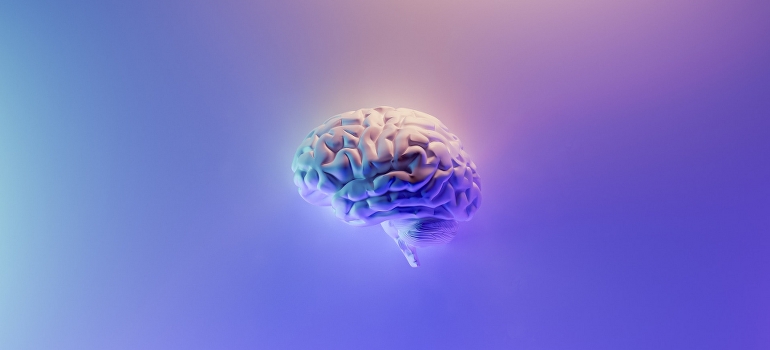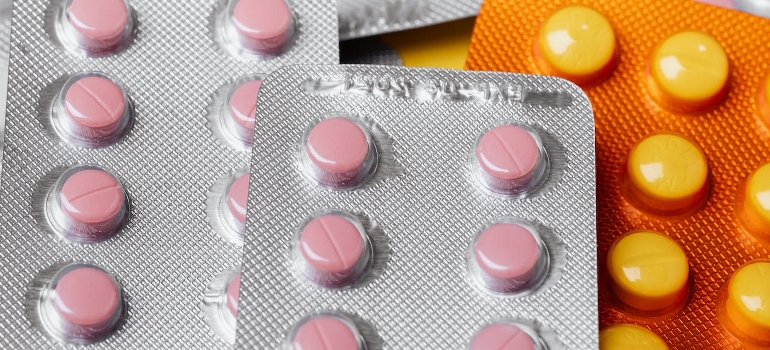Neuroplasticity, the brain’s remarkable ability to reorganize and adapt, is at the heart of understanding addiction and recovery. It shows us that change is possible, even after years of substance abuse. Essentially, it means our brains can learn new, healthier patterns of behavior, replacing the harmful ones developed during addiction. Focusing on neuroplasticity in addiction and recovery sheds light on how we can support the brain in healing itself. Additionally, professional guidance can significantly aid this journey of transformation. That’s why considering addiction treatment centers in West Virginia is a crucial step for anyone looking to start this path.
How Does Neuroplasticity Help in Brain Recovery?
Understanding the brain’s ability to heal and adapt is key in the recovery journey. This process, known as neuroplasticity, is critical in overcoming the challenges posed by addiction. Essentially, neuroplasticity allows the brain to form new connections and pathways. Therefore, this ability offers a scientific basis for hope and healing.

As individuals engage in therapies and activities that promote healthy habits, their brains begin to rewire. This rewiring supports the replacement of destructive addiction patterns with positive behaviors and thoughts. Moreover, it highlights the power of the human brain to recover and grow stronger, even after periods of intense substance use. Emphasizing neuroplasticity in recovery strategies not only enlightens us about the brain’s adaptability but also empowers individuals to take active steps toward their rehabilitation.
The Science Behind Neuroplasticity and Recovery
At its core, the science of how the brain heals and adapts after addiction revolves around neuroplasticity. This fascinating process allows our brains to adjust and form new neural pathways. Imagine it as the brain’s way of remodeling itself in response to experiences, both good and bad.
By engaging in recovery-focused activities, individuals can essentially “retrain” their brains. This involves forming habits that support sobriety and mental well-being. It’s a bit like forging new trails in a dense forest. Initially, it’s challenging, but with consistent effort, these paths become clearer and easier to navigate. This aspect of brain adaptability in recovery underscores the potential for profound change.
Personal Stories of Recovery Highlighting Neuroplasticity
One compelling story of recovery comes from Alex, who battled with alcohol dependency for over a decade. Through a tailored program that emphasized the principles of enhancing brain recovery through neuroplasticity, Alex experienced a remarkable turnaround. Initially, the concept of rewiring his brain seemed abstract, but as he engaged in cognitive-behavioral therapy and mindfulness practices, the changes became tangible. For Alex, it was like learning to play a new instrument. So, each day, he practiced healthy thoughts and actions, gradually creating new neural pathways.
This shift wasn’t overnight, but with persistence, the unhealthy cravings began to fade, replaced by a newfound interest in hobbies and relationships that supported his sobriety. Alex’s journey illustrates the transformative power of neuroplasticity in real life. It’s a vivid reminder that with the right support and strategies, individuals can navigate their way to recovery, reshaping their brains and futures in the process.

What Is the Role of Neuroplasticity in Rehabilitation?
Neuroplasticity is changing how we help people recover from addiction. It shows us that the brain isn’t stuck in one way of thinking or acting. It can actually learn to do things differently. Because of this, we can make rehab programs that really use this ability of the brain to change. In West Virginia, we use a bunch of different methods, like talk therapies that help you think in new ways, mindfulness that helps you be more aware of your thoughts and feelings, and learning new skills that give your brain a workout. These techniques help you build new, healthy habits and ways of thinking that are key to beating addiction.
Take therapy sessions aimed at solving problems, for instance. They’re like brain exercises that build new mental paths, making it easier to deal with life’s challenges. Also, getting into new hobbies or activities helps make new connections in the brain, moving it away from old habits linked to addiction. This whole-person approach to addiction therapy treatment doesn’t just help with getting better; it gives people the skills they need to stay better for the long haul. It really highlights how flexible the brain is and how using that flexibility can lead to real, lasting recovery.
What Are Five Benefits of Neuroplasticity?
Working on neuroplasticity brings amazing perks, especially for those working through addiction recovery. Here’s what makes it so game-changing:
- Learning and remembering stuff becomes easier. When the brain starts making new links between neurons, it gets sharper at picking up new info and holding onto it.
- Your mood improves. Getting a handle on your feelings becomes easier, which is a big deal for keeping setbacks at bay.
- Your brain’s agility increases. You get better at figuring stuff out and coming up with new ideas, which is helpful for tackling the hurdles addiction throws at you.
- It ramps up self-discipline. As you practice healthy habits, your brain’s ability to resist temptations gets stronger.
- It helps your body bounce back. Changing up your brain’s wiring can also speed up your body’s recovery.
Each benefit is a major win, showing that neuroplasticity isn’t just about getting past addiction—it’s about making your whole life better.
Enhancing Cognitive Functions
Neuroplasticity is your brain’s gym session, making it more robust and nimble. This incredible process enhances the way you think, learn, and hold onto memories. Every time you pick up a new skill or tackle your brain with something new, you’re knitting new links between neurons. This doesn’t just amp up your present thinking abilities. It also smooths the path for learning even more down the line.

Whether it’s cracking brain teasers, picking up a new language, or experimenting with a new recipe, you’re essentially powering up your brain. This lift in brain adaptability in recovery goes beyond just getting back on track – it pushes your cognitive skills to new levels.
Strengthening Emotional Resilience
Neuroplasticity isn’t just about making you smarter. It’s also about toughening up your emotional defenses. Imagine it as teaching your brain to deal with feelings in a healthier way. When tough times or bad vibes come knocking, neuroplasticity gives your brain the tools to find better, calmer ways to respond. It’s a bit like redirecting your thoughts onto a sunnier path every time you bump into a worry wall.
This ability becomes super handy when you’re working through recovery, helping you navigate the rollercoaster of emotions that often comes with it. Therefore, diving into practices like mindfulness or therapy sessions aimed at getting a grip on your emotions lays the foundation for a steadier, more resilient version of yourself. Such strategies are key parts of the support you find at drug rehab in WV, aiming not just to get past addiction but to forge a firmer, more emotionally balanced future.
How Can Neuroplasticity Rewire Your Brain?
Rewiring your brain with neuroplasticity means doing activities that encourage new brain connections. To enhance your brain’s flexibility and growth, adopting certain lifestyle choices and habits is key. This boosts your thinking and emotional health.
For this reason, if you are struggling with addiction, it is est to look for a treatment center that offers holistic therapy for addiction treatment. This ensures that the treatment plan you receives considers you as a whole person and treats your whole being, rather than addiction alone.
What Increases Neuroplasticity the Most?
Here are easy ways to start:
- Try mindfulness meditation: Focus on breathing to become more mindful and less stressed.
- Learn something new: Play an instrument or learn a language to stretch your brain.
- Try Yoga for addiction: Moving your body boosts brain function and builds new connections.
- Mix up your routine: Choose a new route or cook a new dish to stimulate your brain.
- Read and puzzle: Engage in concentrated thinking and problem-solving.
- Get enough sleep: Adequate sleep is essential for neuroplasticity as it allows the brain to consolidate memories, process information, and facilitate synaptic pruning, crucial processes for adaptive learning and cognitive function.
- Avoid stress: Using relaxation methods to keep stress in check helps protect your brain from stress’s harmful effects.
Adding these activities to your daily life can change your brain, leading to sharper thinking and resilience. Tackling substance dependencies is crucial since substances can interfere with your brain’s healing and new connection formation.

How Can Diet Help with Neuroplasticity?
A diet rich in omega-3 fatty acids has been found to support neuroplasticity, the brain’s ability to adapt and reorganize itself by forming new neural connections. Omega-3s are essential nutrients that play a crucial role in brain health and function. Here’s how incorporating omega-3s into your diet can benefit neuroplasticity:
- Promotes Brain Cell Membrane Integrity: Omega-3 fatty acids, particularly EPA (eicosapentaenoic acid) and DHA (docosahexaenoic acid), are key components of cell membranes in the brain. These fatty acids help maintain the fluidity and flexibility of cell membranes, which is essential for efficient communication between brain cells. A diet rich in omega-3s ensures the structural integrity of brain cells, facilitating neuroplasticity.
- Enhances Synaptic Plasticity: Synapses are the connections between neurons where communication occurs. Omega-3 fatty acids have been shown to enhance synaptic plasticity, the ability of synapses to strengthen or weaken over time in response to activity. This process is fundamental to learning, memory, and adaptive behaviors. By promoting synaptic plasticity, omega-3s support the brain’s ability to rewire and reorganize in response to experiences and stimuli.
- Reduces Inflammation: Chronic inflammation in the brain can impair neuroplasticity and contribute to cognitive decline. Omega-3 fatty acids possess anti-inflammatory properties, helping to dampen inflammation in the brain. By reducing inflammation, omega-3s create a more favorable environment for neuroplasticity to occur, allowing for optimal brain function and adaptation.
- Supports Neurogenesis: Neurogenesis is the process by which new neurons are generated in the brain. Omega-3 fatty acids have been linked to increased neurogenesis, particularly in regions associated with learning and memory, such as the hippocampus. By promoting the generation of new neurons, omega-3s contribute to the brain’s capacity for adaptation and renewal, enhancing neuroplasticity.
Incorporating omega-3-rich foods into your diet, such as fatty fish (salmon, mackerel, sardines), walnuts, flaxseeds, and chia seeds, can provide the essential nutrients needed to support neuroplasticity and overall brain health. Additionally, omega-3 supplements may be beneficial for individuals who have difficulty obtaining sufficient amounts through dietary sources. By prioritizing omega-3 intake, you can optimize neuroplasticity and promote lifelong cognitive vitality.
What Drugs Increase Neuroplasticity?
Certain medications can boost the brain’s flexibility and growth, enhancing neuroplasticity. These medicines, often included in a well-rounded treatment strategy, improve the brain’s knack for making new links. They’re especially valuable in recovery efforts aimed at brain healing. For example, antidepressants can boost neuroplasticity, encouraging the development of new brain paths.

Mood stabilizers and some supplements also contribute to making the brain more adaptable. Having reliable rehab insurance is crucial, as it helps cover the costs of these beneficial drugs. This ensures access to comprehensive treatments that nurture brain health and aid in recovery, highlighting the need to blend medication with therapy and healthy lifestyle choices for the best outcomes in brain healing and function.
What Are the Types of Neuroplasticity?
Neuroplasticity comes in various forms, each playing a unique part in how our brains adjust and evolve. Here’s a quick look at the main types:
- Functional Neuroplasticity: This is when the brain moves tasks from an injured area to a healthy one, similar to detouring traffic to avoid roadblocks.
- Structural Neuroplasticity: This happens when the brain’s structure itself changes, building new connections due to learning or new experiences, akin to constructing new pathways for easier access.
Together, these types ensure our brains remain capable of learning and healing, offering endless possibilities for mental growth and recovery.
Does Dopamine Increase Neuroplasticity?
Dopamine, an essential brain chemical, is crucial for our brain’s ability to adjust and learn. When our dopamine levels are just right, our brain finds it easier to make new connections, which is key for neuroplasticity. This means dopamine doesn’t just make us feel good. It also helps us learn and get used to new stuff or situations. For anyone working through recovery, grasping this connection is super important. If you are in individual therapy for addiction, your therapist may discuss this with you. They may suggest approaches to addiction treatment that aim to keep dopamine levels in check can boost neuroplasticity. This makes the brain more open to change. Understanding this shows why it’s so important to use therapy methods that help with both our feelings and our thinking.
When and Why Is Neuroplasticity Bad?
While neuroplasticity is mostly positive, it has a flip side, too. Sometimes, our brains can adapt in ways that aren’t helpful, like developing bad habits or addiction patterns. But the good news is we can counteract these negatives. Strategies include therapy, healthy lifestyle changes, and sometimes, medication assisted treatment in West Virginia. These approaches help retrain the brain toward positive behaviors and thoughts, leveraging neuroplasticity for our benefit. So, it’s all about guiding the brain’s adaptability in the right direction.
What Kills Neuroplasticity?
A few things can put the brakes on how well your brain can change and grow:
- eating poorly
- not getting enough sleep
- staying inactive
- feeling stressed all the time
- using too much alcohol or other substances
These habits and situations make it tougher for your brain to create new pathways. They slow down how it learns and develops. But tackling these issues can help clear the way for your brain to adjust and strengthen more easily.
Does Neuroplasticity Change IQ?
The link between neuroplasticity and intelligence is fascinating. It turns out that improving our brain’s adaptability through neuroplasticity can also impact our IQ. By engaging in activities that promote neuroplasticity, like learning new skills or challenging ourselves intellectually, we can potentially enhance our cognitive abilities. This relationship suggests that intelligence isn’t fixed. Therefore, with effort and the right practices, we can boost our brain power and learning capacity.
At What Age Does Neuroplasticity Stop?
It’s a myth that neuroplasticity stops at a certain age. In truth, our brains keep their ability to create new connections throughout our entire lives. This fact is especially encouraging for anyone exploring treatment options for addiction in WV. It means no matter how old you are, there’s always a chance to pick up new skills or kick old habits. This understanding of neuroplasticity’s lifelong presence offers a glimmer of hope, proving that personal growth and recovery can happen at any age.

Neuroplasticity in Addiction and Recovery for a Brighter Future
Overall, the role of neuroplasticity in addiction and recovery is incredibly powerful. Our brains have this amazing ability to change and grow, opening up new possibilities for recovery that go beyond what we’ve always done. By digging into how neuroplasticity works in both addiction and recovery, people can tap into their brain’s natural talent for transformation. Undeniably, this leads to recovery efforts that help individuals in ways they hadn’t imagined. Welcoming neuroplasticity into recovery is like opening the door to a future where change is part of becoming stronger and more adaptable.



